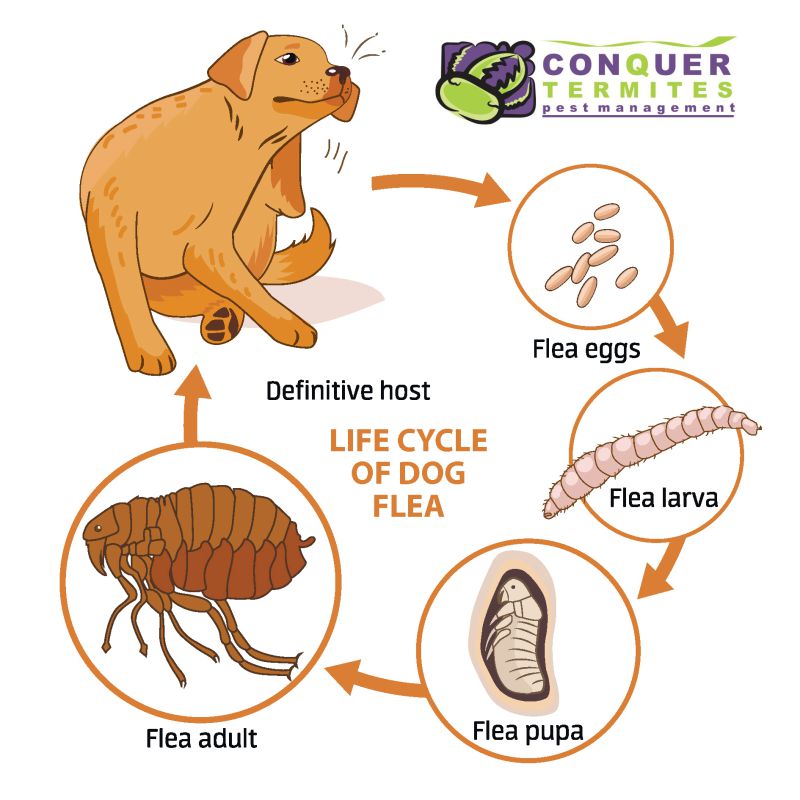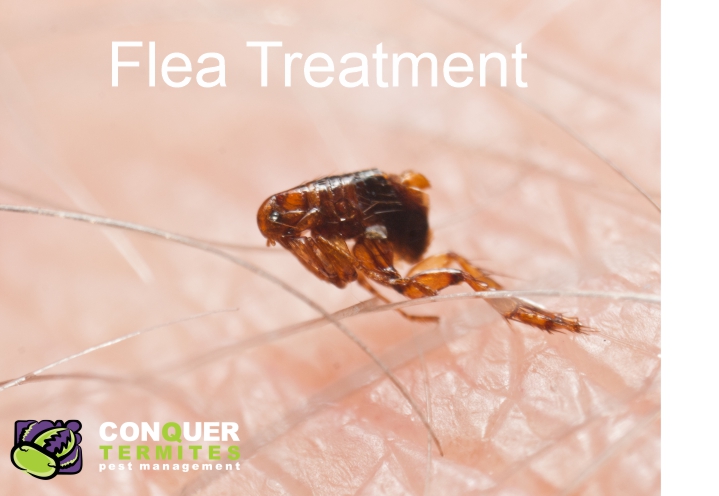You have an adorable pooch that is well-groomed and (mostly) well-behaved, but it keeps getting fleas! Why is that? Mean to say, you have no other pets, and your place is kept clean.
Obviously, your pet is getting fleas from somewhere. So when, how and where?
Where does my pet get fleas from?
It just needs to walk past an area with freshly hatched fleas waiting to spring onto your dog or cat as they pass by. This could happen anywhere the flea pupa is lying in wait.
- Anywhere a domestic or feral cat wanders through your garden at night (when the pooch is asleep). They are the biggest spreader of fleas in an urban environment.
- Other untreated dogs - dog beds
- Grass in parks and along sidewalks - dog parks are a huge flea farm
- From the dirt under your house
It helps to know the flea’s life cycle to understand why your pet becomes a victim of fleas.
Flea Life Cycle

Flea eggs
It starts with the adult female flea laying her eggs in your pet’s fur. These are white and oval in shape and will fall off the dog or cat as it moves around. Eggs will hatch one to ten days after being laid, but it greatly depends on the temperature and humidity of the environment where they are dropped.
Flea Larvae
Once the eggs hatch they turn into larvae. Flea larvae are translucent, hairy, and 2 to 4 mm long. These larvae love dirty carpets, cracks and moist areas. They will start to feed on a range of organic materials and then after 5 to 12 days, they will spin a cocoon to form a pupa.
Flea Pupa
This is the stage where your pet normally gets exposed to fleas. It is triggered to feel the vibrations of a likely host. Walking neat takes 1 to 2 weeks to develop the pupa into an adult flea. Once it is designed and ready, it will rapidly emerge from the cocoon and leap onto a new host, your pet!
Adult Flea
Adult fleas need to feed immediately from their new host. Once they start to feed, they will remain on that host until it is removed or dies. The female flea, after mating, will lay eggs around two days after her initial feed. She can produce over 2,000 eggs in her lifetime.
Fleas don’t have mandibular mouth parts, so they actually can’t bite. So, when somebody claims that they have been “bitten” by a flea. You can contradict them and say, “No, you haven’t. You’ve been ‘pierced and sucked!’”
A Flea’s Fantastic Jump Takes More Than Muscle - PBS Digital Studios, USA
What you can do to prevent fleas
- Treat your pets with an appropriate flea treatment.
- Thoroughly vacuum your house – under beds and furniture.
- Wet clean all hard floors with a eucalyptus-based cleaner
- Mow your lawns and blow debris away from the house

How to treat fleas - safe target spray with IGR additive
Our technicians will spray throughout the house (and furnishings if required) a non-toxic spray that has an additive IGR (Insect Growth Regulator). The spray will kill most of the adult fleas that are exposed to it. The IGR additive will disrupt how the eggs and larvae moult and grow.
It is alslarvaeortant to spray outside your home as that is usually where your pets pick up fleas that have spread from feral cats.
A big problem with treating fleas is that the egg castings are impervious to moisture (chemicals) and it is not until the young fleas are triggered to hatch from their eggs on vibrations - you walking past.
We strongly recommend scheduling two treatments with a bad infestation.
If you have questions, check our Flea Info Page, or book a treatment.
Call us now on 1300 417 007




